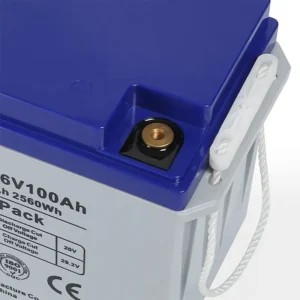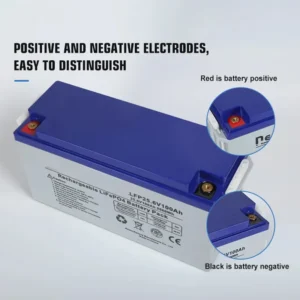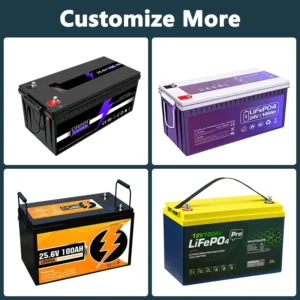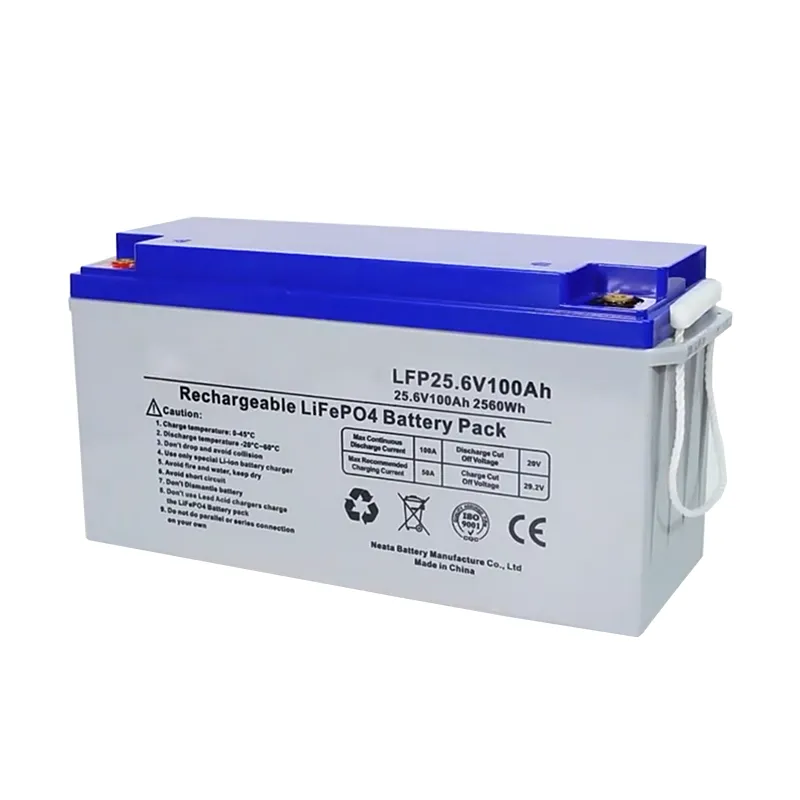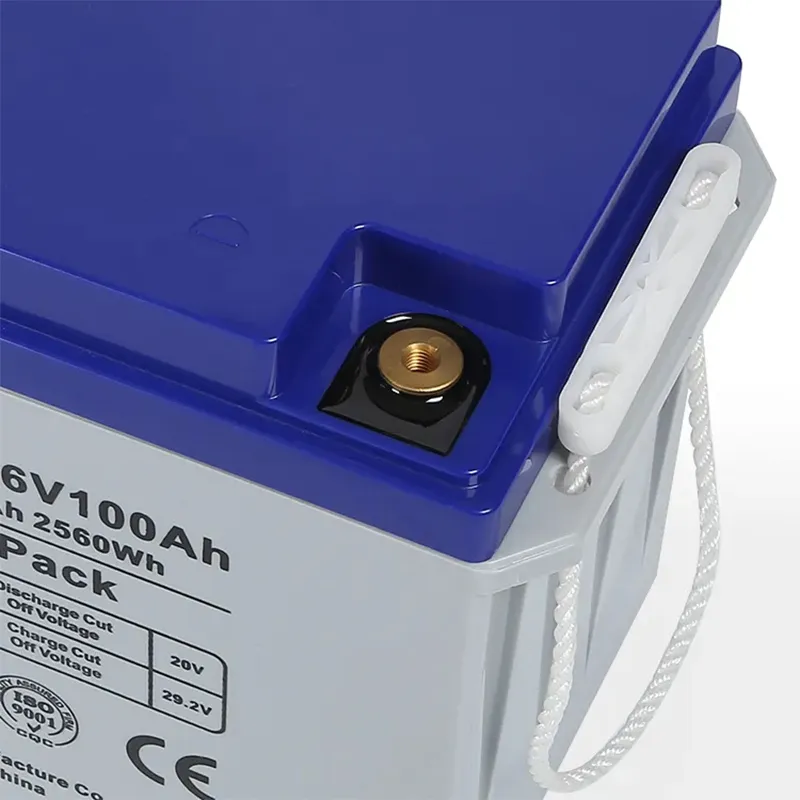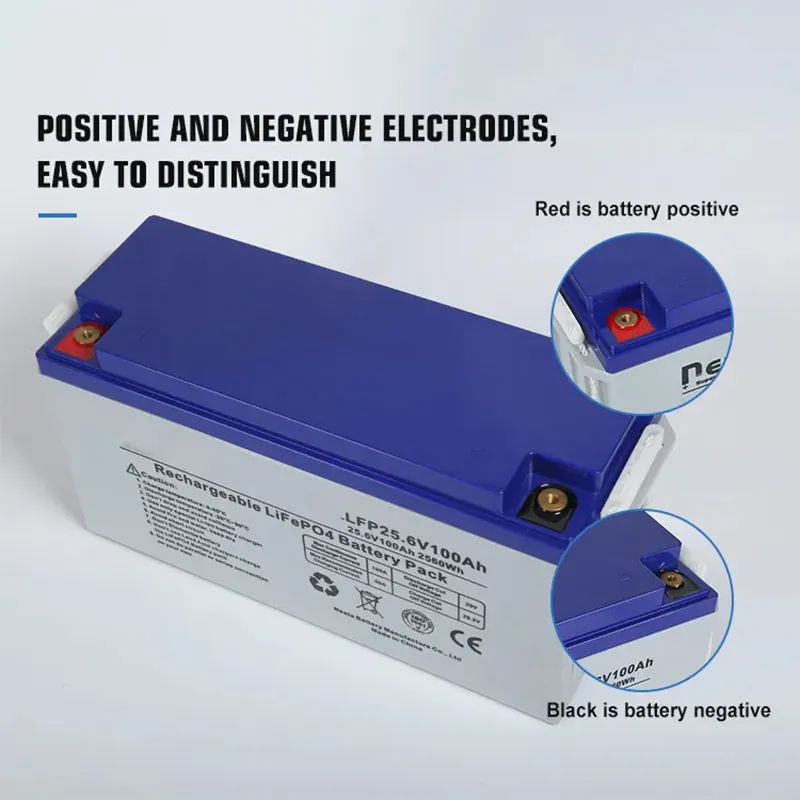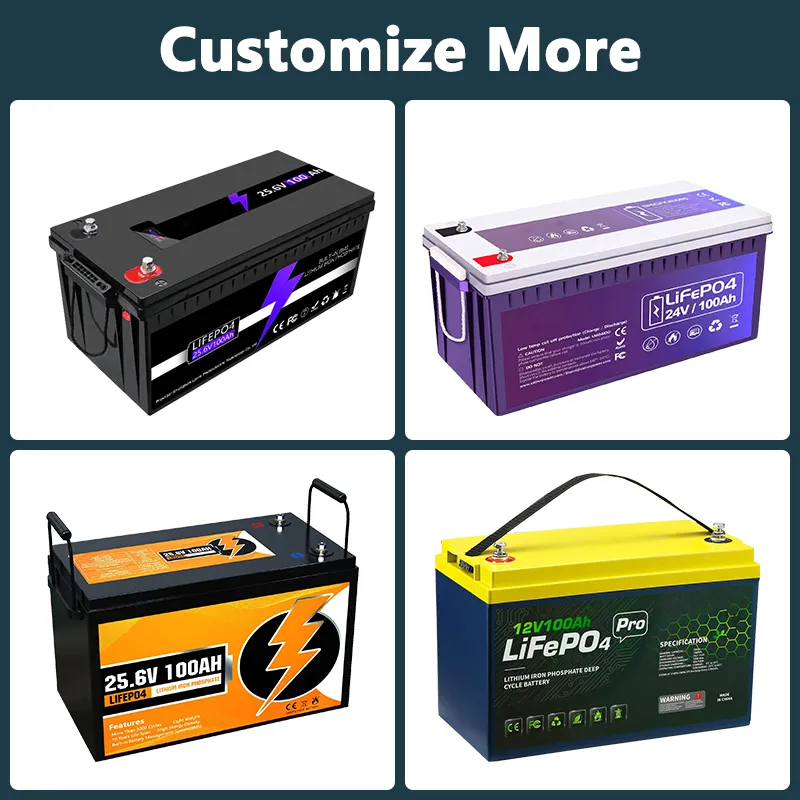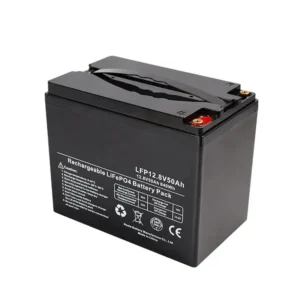25.6V 100Ah LiFePO4 Battery LFP24100
Features:
- Advanced Battery Management System (BMS) for optimal performance.
- Reliable customer service and warranty coverage.
- Excellent safety with reduced risks of overheating or explosion.
- Low self-discharge rate for extended storage periods.
Parameters
| Model | LFP24100 |
| Rated Capacity | 100Ah |
| Rated Voltage | 25.6V |
| Energy | 2560Wh |
| Standard Charge Current | 20A |
| Max. Charge Current | 100A |
| Charge Cut Off Voltage | 29.2V |
| Standard Discharge Current | 20A |
| Max. Continuous Discharge Current | 100A |
| Discharge Cut Off Voltage | 20V |
| Max. Pulse Discharge Current | 200A |
| Charge Temperature | 0 to 45ºC |
| Discharge Temperature | -20 to 60ºC |
| Storage Temperature | 0 to 40ºC |
| Dimension (L*W*H) | 483*170*214mm |
| Weight | 22kg |
CAN'T FIND WHAT YOU WERE LOOKING FOR?
FAQ
The recommended charge voltage for a 24V LiFePO4 battery is typically around 27.2 to 28.8 volts. It’s important to refer to the manufacturer’s specifications or consult the battery documentation to ensure the correct charging voltage for your specific battery model.
The acceptable voltage difference for LiFePO4 batteries depends on the specific battery model and its recommended operating range. Generally, a balanced LiFePO4 battery pack should have a voltage difference of no more than 0.1 to 0.3 volts between individual cells or modules. It’s essential to monitor and maintain the voltage balance within this range to ensure optimal performance and longevity of the battery pack.
To determine the charging current required for a 100Ah LiFePO4 battery, it is recommended to use a charging current of 0.2C to 0.5C. C refers to the battery capacity, which in this case is 100Ah.
So, the charging current range for a 100Ah LiFePO4 battery would be approximately 20A to 50A. However, it’s important to refer to the manufacturer’s specifications and guidelines for the specific battery model to ensure safe and efficient charging. Different battery models may have different recommended charging currents, so it’s always best to follow the manufacturer’s recommendations.
When solar batteries are full, the excess solar power can be managed in several ways:
- Float Mode: The charge controller maintains the batteries at full capacity by providing a trickle charge to compensate for self-discharge.
- Battery Equalization: Some charge controllers can perform equalization to balance the charge across all cells, enhancing battery performance.
- Power Diversion: Excess power can be directed to other devices or systems, such as water heaters or electric vehicle chargers, maximizing energy usage.
- Solar Power Limiting: If no power diversion is available, the solar input may be limited or temporarily shut off to prevent overcharging.
These strategies ensure efficient energy utilization and protect the batteries from damage caused by overcharging.


